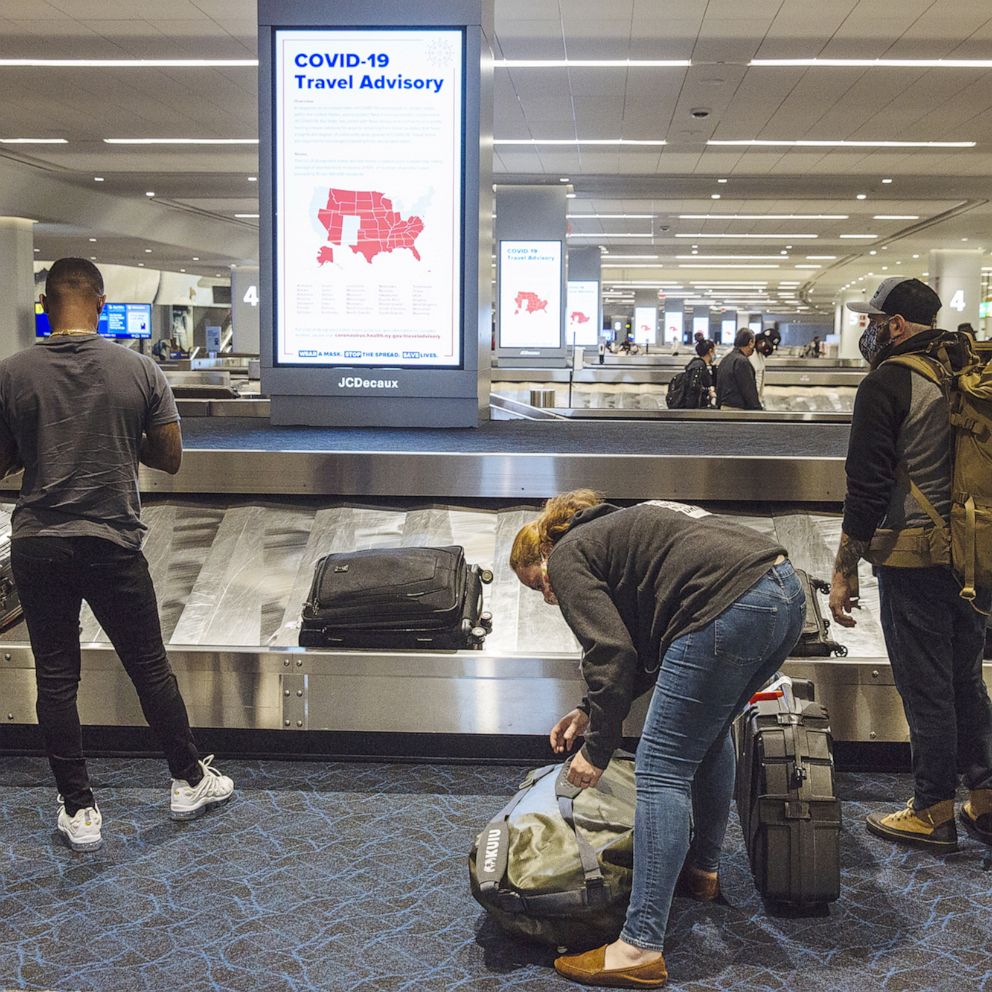


The holiday season, from Thanksgiving through New Year's, is always one of the busiest travel times -- even during a global pandemic. This Thanksgiving, airlines including United and American Airlines are expecting an increase in flights.
As the number of coronavirus cases continue to rise across the country, health experts are warning against large gatherings this holiday season, leaving many Americans wondering if it's OK to travel to see family this year and how they can do it safely.
The Centers for Disease Control and Prevention released guidance on what to do before you travel. Some of their recommendations include checking if your destination has an increase in COVID-19 cases, wearing a mask on public transportation, staying at least 6 feet apart from anyone who is not in your household and using hand sanitizer.
MORE: CDC issues robust new Thanksgiving guidance as cases surge in USThe CDC also warned not to travel if you are sick or if you have been around someone with COVID-19 in the past 14 days.
There are still many factors to consider before traveling during the holidays.
"It's really important as we get into the holiday season to understand that we're in a situation right now where our actions affect not only ourselves, but the people around us more than ever," said ABC News' chief medical correspondent, Dr. Jennifer Ashton. "We are at the peak of our case rate so far this entire year and the trajectory is only going up and it's going up sharply. Therefore, it really is incumbent on all of us to take aggressive steps that unfortunately involve a significant amount of sacrifice during the holiday season."
For those still on the fence about traveling this year for the holidays, Ashton shared some advice about what to consider and what to do to help protect yourself.
MORE: Thanksgiving safety amid COVID-19: Here's what you should consider to stay safeWhile various forms of travel and transportation have not been assessed and given specific levels of risk, Ashton said these five basic parameters can help determine which type of travel may be best to help assess your individual risk.
Those elements are time, place, people, space and masks.
Time: Ashton said you should ask yourself how long you will be in a given situation. "More time is riskier than less time," she said. "The cutoff, as issued by the CDC is 15 minutes of cumulative time. Most types of travel take longer than 15 minutes."
Place: The questions to ask yourself next are: Will you be inside or outside? Will it be well ventilated or poorly ventilated? According to Ashton, in most types of travel, including airplanes, ventilation is an issue; however, the risk of airplane travel is unclear and may be less risky than you think.
A mathematical model at MIT found that when people are masked on a two-hour flight with an open middle seat, the risk of becoming infected with COVID-19 is extremely low and the risk of dying from an infection of COVID-19 is incredibly low. "That does not mean zero, but the way that the air is constantly filtered and exchanged on most commercial aircraft makes it relatively safe compared to other types of travel provided that people are masked," said Ashton.
Space: Ashton said it's important to determine if you'll be spending time indoor or outdoor when you travel. While most travel involves some form of indoor environment, if you're taking a car or a bus and can keep windows open, that can help lower the risk of infection.
People: Consider how many people are near you. The closer people are to you and the more densely crowded an environment, the higher the risk, said Ashton.
Masks: "If everyone is masked, the risk goes way down... significantly lower, not zero, but significantly lower," she said.
MORE: This viral TikTok is a must-watch before your next hotel stayIn addition to wearing a mask, Ashton said you can lower your risk of getting COVID-19 by reducing your movement around the plane during a flight. By staying in your seat, it will help reduce the number of people you come into close contact with. In addition, wipe down the armrest and anything that you might be touching.
If you can, also wear eye protection. While it's not a universal or official recommendation, Ashton said it's common sense.
MORE: Distance vacations are the trend in 'safe' travel during COVID-19"We know that the virus can enter our body via mucous membrane such as the eyes, nose and mouth," said Dr. Ashton. "If you can wear eyeglasses or some kind of an eye shield in addition to a face covering, that would offer an additional degree of protection."
According to the American Automobile Association, 47.8 million Americans are expected to travel by car this Thanksgiving. While it's the easiest form of travel that people have, the caveat is if you're traveling with someone you don't know.
"If you really don't know about the status of the person in the car with you or if they're older or more at risk due to preexisting medical conditions, people should keep masks on and windows should be open for ventilation," said Ashton. "They key is individualizing the risk and situation for you and taking every step we can to lower that risk."
ABC News' Mina Kaji contributed to this report.